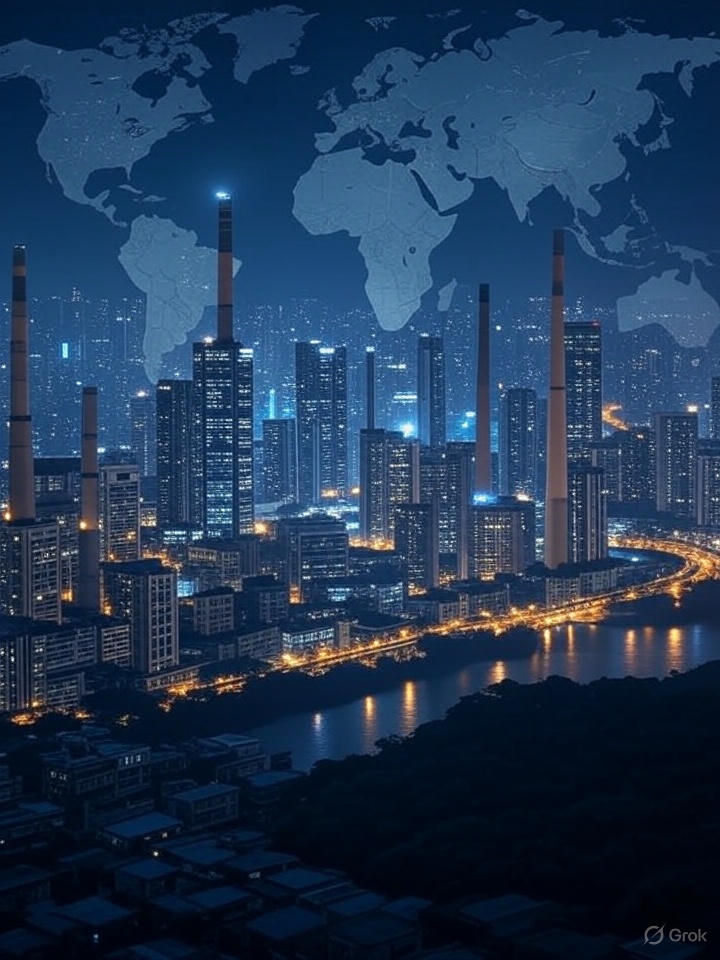The Invisible Mine: How India's Air Could Mint the Next Generation of Billionaires—Or Leave Millions in the Dust
- thebrink2028
- Sep 18
- 3 min read

There's a dusty village in Gujarat, where a single farmer, hands hardened from decades of tilling parched soil, logs into a government app on his subsidized smartphone. With a few taps, he verifies that his mango grove has isolated 500 tons of CO₂ this monsoon season—equivalent to pulling 100 cars off the road for a year. In return? A digital certificate worth $5,000, wired straight to his account. No middleman, no export hassles. Just clean air turned into cold cash. This isn't sci-fi. Soon, this could be as routine as selling rice at the mandi. But here's the headline screaming from tomorrow's shadows: India's Carbon Rush Ignites—Farmers Fortune or Corporate Heist?
Carbon credits are tradable permits proving you've slashed emissions or locked away CO₂—like digital IOUs for the planet's lungs.
India: The Carbon Credit Trading Scheme (CCTS), rolled out in June 2023 and hitting compliance mode this fiscal year (2025-26), mandates steel mills, power plants, and cement factories to cut emissions by 2-3% initially, ramping to 5-10% by 2027.
If you miss the mark? Buy credits from greener players.
If you have surplus? Sell 'em. It's a $50 billion domestic market developing, and with voluntary credits adding another $1.2 billion annually. For a nation emitting 2.8 gigatons of CO₂ yearly—7% of the global total—this flips pollution from a penalty to profit.
Zoom out. The EU's Emissions Trading System, the world's biggest carbon playground at €800 billion ($880B) in 2024 trades, has birthed green tycoons from Berlin to Beijing. China, hoovering 60% of global credits, turned mangroves into a $10B export racket. California's cap-and-trade funneled $5B into low-income clean tech since 2013.
India, with its solar blitz (500 GW non-fossil target by 2030) and reforestation bonanza (26 million hectares pledged), isn't playing catch-up—it's gunning to corner 10-15% of the voluntary market, outpacing Africa's nascent plays.
As 140 countries chase net-zero by 2050, credits could swell from $2.5B voluntary today to $100-250B by 2030. India's edge: Low per-capita emissions (1.9 tons vs. the US's 15) mean we're credit-rich, not cash-poor.
The detail buried under the PR gloss and policy fanfare.
Nine of the world's 47 shadiest carbon projects in 2024 are all in India, churning "problematic" credits that don't actually cut emissions. Take the Mytrah Vento wind farms in Telangana: Certified for 1.2 million tons of offsets since 2018, but audits reveal over-credited baselines—inflated "before" emissions to juice the "after" savings. Farmers nearby report dust-choked fields from unchecked turbine sprawl, with zero community royalties. Or the Godavari Bioenergy ethanol plant in Andhra: It pocketed $20M in credits for "waste-to-fuel," but local rivers run black from untreated sludge, displacing 200 fisherfolk.
A 2025 Nature study of six Indian forestry projects found 40% of credits "wilted"—forests razed post-certification, credits cashed out, ecosystems ghosted. This is not green gold; it's fool's pyrite, ruining trust and pricing credits at a bargain $3-6 per ton (vs. EU's €80). If unaddressed, it could tank India's export cred, stranding $20B in potential revenue by 2030.
But you're not here for doom-scrolling.
Curious what happens if EU tariffs slap "India-risk" premiums on dodgy credits, or Reliance flips its Jamnagar refinery into a 100M-ton sink by 2035?
TheBrink has evolved—beyond alerts into Action Packs, Early Warning Briefs, and sponsored deep-dives. If you're reading this, you're not chasing headlines; you're scouting the fault lines where fortunes fracture or forge.
Access is open: Pay the subscription to claim your spot. Don't ignore the goldmine.
If tomorrow's credits cratered 50% on a scandal, would you bet on air—or scramble for soil? Drop your take below.


